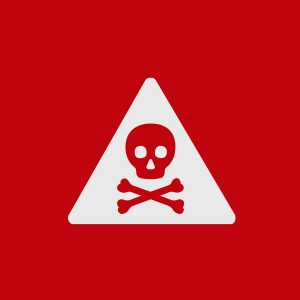View Incidents
Vales Point
-

Decrease: Vales Point
Learn moreA decrease is an incident where a unit of a coal power station reduces its generation significantly. Source: OpenNEM, The Australia Institute
-

Unit trip: Vales Point
Learn moreA unit trip is an incident where an entire unit of a coal power station reduces its generation to zero. Source: OpenNEM, The Australia Institute
-

Vales Point Coal Power Station reports licence non-compliance on 2 occasions
Learn moreThe NSW Environment Protection Authority alleges Vales Point Coal Power Station did not comply with a licence condition on 2 occasions, in reference to alleged exceedance of the Total Suspended Solids concentration limit (on two occasions, minor), due to high TSS results in inlet water canal.
-

Vales Point Coal Power Station releases 0.1kg of arsenic
Learn moreVales Point Coal Power Station reports releasing 0.1kg of arsenic & compounds in the year to 30 June 2018.
-

Vales Point Coal Power Station releases 325 tonnes of hydrochloric acid
Learn moreVales Point Coal Power Station reports releasing 325 tonnes of hydrochloric acid in the year to 30 June 2018.
-

Vales Point Coal Power Station releases 3kg of mercury
Learn moreVales Point Coal Power Station reports releasing 3kg of mercury & compounds in the year to 30 June 2018.
-

Vales Point Coal Power Station releases 20,454 tonnes of oxides of nitrogen
Learn moreVales Point Coal Power Station reports releasing 20,454 tonnes of oxides of nitrogen in the year to 30 June 2018.
The Australian government says people who live near coal burning power plants may be exposed to higher levels of nitrogen oxides. Even low levels of exposure can impact an individual’s eyes, nose, throat and lungs. -

Vales Point Coal Power Station releases 78,818kg of PM10
Learn moreVales Point Coal Power Station reports releasing 78,818kg of PM10 in the year to 30 June 2018. PM10 is small particulate matter which can cause serious health effects.
The Australian government says it has been linked to increased respiratory symptoms and premature death. -

Vales Point Coal Power Station releases 45,715kg of PM2.5
Learn moreVales Point Coal Power Station reports releasing 45,715kg of PM2.5 in the year to 30 June 2018.
PM2.5 is extremely small particulate matter, which can be inhaled deep into the lungs and may cause serious health effects. The Australian government says it has been linked to increased respiratory symptoms and premature death. -

Vales Point Coal Power Station releases 20,632 tonnes of sulfur dioxide
Learn moreVales Point Coal Power Station reports releasing 20,631,525kg of sulfur dioxide in the year to 30 June 2018.
The Australian government links repeated or prolonged exposure to moderate concentrations of sulfur dioxide to inflammation of the respiratory tract, wheezing and lung damage.